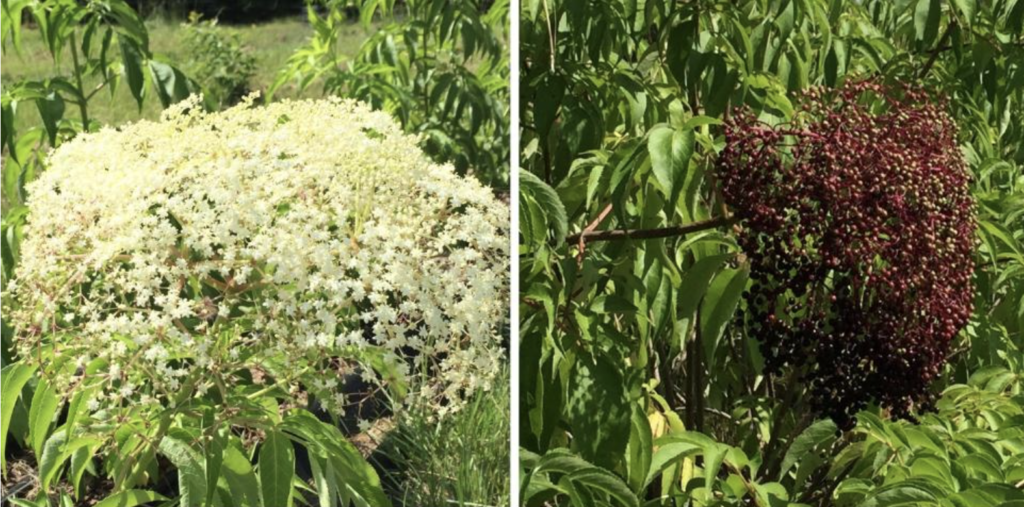By Maegan Beatty
Elderberry (Sambucus spp.) is a fruit crop that is suitable for both commercial and home growing. In April, the University of Florida Institute of Food and Agricultural Sciences (UF/IFAS) hosted an orchard field day, where Dave Jarnagin of Hyldemoer and Company gave an educational presentation on the elderberry and elderflower.

Elderberries are native to North America but have not always been the most popular crop to grow because of their possible toxicity. However, the high levels of antioxidants and health benefits of the fruit have created a higher demand for the fruit and flowers, and this interest may provide an alternative crop opportunity for Florida growers with many value-added possibilities.
“This crop started to gain popularity in 2020 after COVID,” Jarnagin said.
The fruit and flowers of the elder are used for wine, teas and dyes for food and textiles. The growing conditions of this crop greatly affect the quality of the fruit and flower, which is why it is important to know how to cultivate it.
CROP MANAGEMENT
Elderberry can be propagated from hardwood cuttings, softwood cuttings and seed, but hardwood cuttings are recommended. Using hardwood cuttings is typically an easier and more cost-effective route to take when growing elderberries.
Propagation by stolon section is another way to propagate elderberries. The main advantage of this method is that this propagation material can be taken over a long season and can be planted in a similarly long season either directly in ground or in pots.
Elderberry adapts to many kinds of soil, but farmers will see the highest yields with well drained soils and a pH of 6 to 6.5. Since Florida experiences heavy rains with varying soil drainage, raised beds are often recommended to help protect the crop.
When it comes to fertilizer, there are currently no main recommendations for elderberries since it all depends on the conditions of the fruit and the soil type the crop is planted in. Farmers can use compost as a fertilizer, but they should not rely solely on compost for all situations.
Elderberries can be planted in the fall or the spring, but the chilling requirement for elderberries falls between 400 and 500 hours. This is something to keep in mind when choosing to plant the crop. Additionally, the elderberry and flower are wind pollinated. Farmers should also consider the scope and size of their farm before engaging in the pruning process. Typically, pruning is not required in the first two years of production.
WEED AND PEST CONTROL
Elderberries do not compete well with weeds, so this is an important factor to consider. It is advised that farmers limit the amount of herbicides and mechanical weeding for the best production of the crop.
Eriophyid mite, spider mite, stink bug, leaf-footed bug, armyworms, spindle worm borer, Japanese beetles, spotted-wing Drosophila, and other insect pests can be problematic for growing elderberry in Florida. Farmers can read more about managing these pests by going to the UF/IFAS EDIS Publications.
LOOKING FORWARD
There is still much to learn about growing elderberry fruit and flowers in Florida. Scientists, researchers and farmers are constantly looking at new cultivation techniques in order to find the best practices for growing the crop.
“If you’re interested in growing elderberry, you really have to test out your land with a small number of plants (to see how well it will grow),” Jarnagin said.









